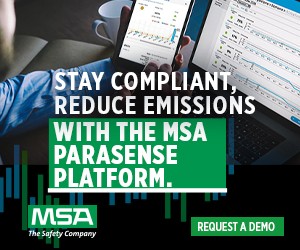OSHA Announces New Emphasis Program Targeting Warehouses and Distribution Centers

The NEP is currently scheduled to run for three years, but similar to the NEP on chemical facilities, could be renewed after the initial three-year period. As with other National Emphasis Programs, State Plan states must adopt a program that is identical or is at least as effective, as the NEP. Under the new emphasis program, OSHA will conduct comprehensive safety inspections focused on hazards related to powered industrial vehicle operations, material handling, and storage, walking and working surfaces, means of egress, and fire protection. The program will also include inspections of retail establishments with high injury rates with a focus on storage and loading areas. It is important to note that OSHA can expand an inspection’s scope when evidence shows that violations may exist in other areas of the establishment. That could bring additional inspection attention to refrigeration systems, should inspectors find evidence of potential violations.
In addition, OSHA will assess heat and ergonomic hazards under the emphasis program, and health inspections may be conducted if OSHA determines these hazards are present. The Biden Administration has recently placed a high priority on addressing heat-related hazards. On July 27th, the Department of Labor announced that OSHA has issued a heat hazard alert to remind employers of their obligation to protect workers against heat illness or injury in outdoor and indoor workplaces. The department also announced that OSHA will intensify its enforcement where workers are exposed to heat hazards, with increased inspections in high-risk industries like construction and agriculture. These actions will fully implement the agency’s National Emphasis Program for Outdoor and Indoor Heat Related Hazards, announced in April 2022, to focus enforcement efforts in geographic areas and industries with the most vulnerable workers. In addition, the government has launched a new website called “heat.gov”, which identifies where current heat alerts are taking place, and information on how to best mitigate and prevent heat-related illness, stresses, and other negative effects.
The OSHA directive for the NEP clarifies that worker exposure to ergonomic hazards must also be assessed during a review of the employer’s injury and illness logs, during worker interviews, and the establishment walkthrough. When exposures to ergonomic hazards are occurring, the inspection scope shall be expanded, and a health inspection shall be opened.
Inspected establishments will be chosen from two lists. One list includes establishments with industry codes covered under this emphasis program. The second consists of a limited number of retail establishments with the highest rates of injuries and illnesses resulting in days away, restricted duty, or job transfer.
Below is a listing of NAICS codes for industries covered by the NEP:
NAICS CODES ESTABLISHMENTS
- 491110 Postal Service (Processing & Distribution Centers only)
- 492110 Couriers and Express Delivery Services
- 492210 Local Messengers and Local Delivery
- 493110 General Warehousing and Storage
- 493120 Refrigerated Warehousing and Storage
- 493130 Farm Product Warehousing and Storage
- 493190 Other Warehousing and Storage
The following NAICS codes identify the types of retail establishments subject to the NEP:
NAICS CODES HIGH INJURY RATE RETAIL ESTABLISHMENTS
- 444110 Home Centers
- 444130 Hardware Stores
- 444190 Other Building Material Dealers
- 445110 Supermarkets and other grocery stores
- 452311 Warehouse Clubs and Supercenters
Inspections under the NEP, except for high injury rate retail establishments, will be comprehensive safety inspections and will focus on workplace hazards common to those industries, including powered industrial vehicle operations, material handling/storage, walking working surfaces, means of egress, and fire protection. Heat and ergonomic hazards must be considered during all inspections covered by this NEP and a health inspection shall be conducted if OSHA learns that heat and/or ergonomic hazards are present.
Inspections of high-risk retail establishments covered by the NEP will focus on the loading and storage areas, but OSHA may expand the scope of the partial inspection when there is evidence (e.g., injuries or illnesses recorded in both OSHA forms 300 and 301, employee statements, or “plain view” observations) that violative conditions may be found in other areas of that establishment. Inspections initiated by OSHA based upon fatalities/catastrophes, complaints, or referrals related to establishments in the NAICS codes covered under this NEP will be expanded to address the workplace hazards targeted by the new NEP. It is also important to note that inspections conducted under the new NEP may be combined with other programmed and unprogrammed inspections. As a result, IIAR members undergoing programmed inspections under the NEP on Chemical Facilities or other types of OSHA inspections may see those inspections expanded to include the scope of the new NEP.
In preparation for potential inspections under the new NEP, IIAR members with facilities covered by the NAICS codes listed in the NEP are encouraged to review their policies and operations with a particular focus on powered industrial vehicles, material handling/storage, walking-working surfaces, means of egress, fire protection, heat hazards, and ergonomics.













